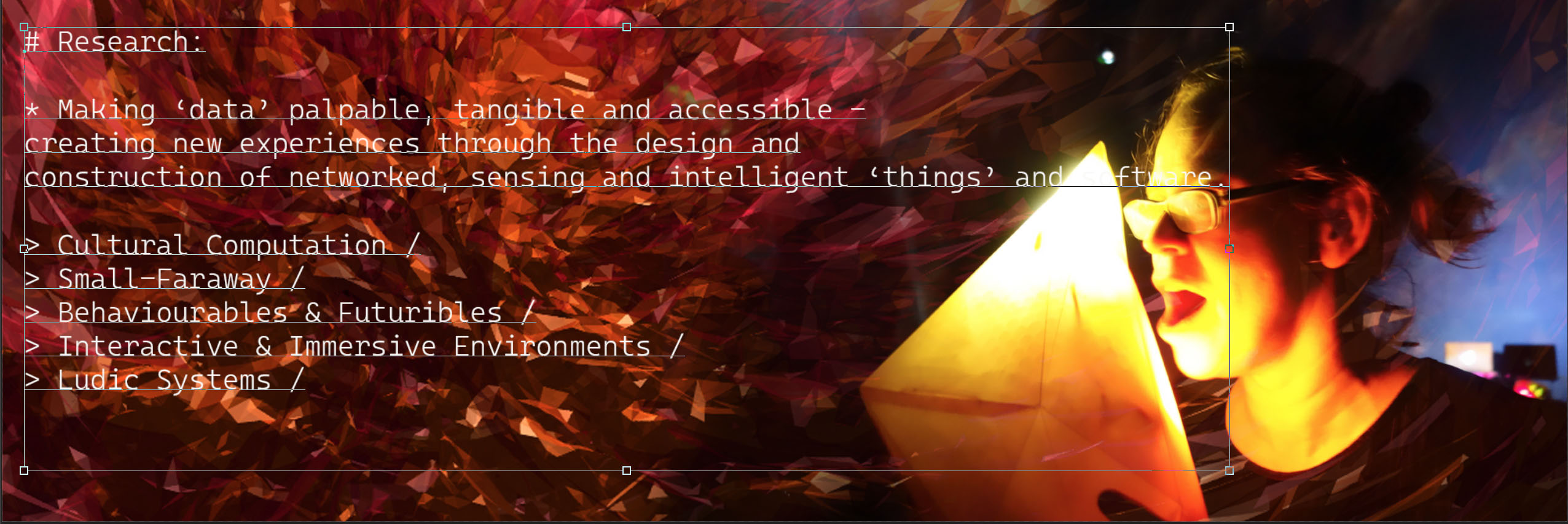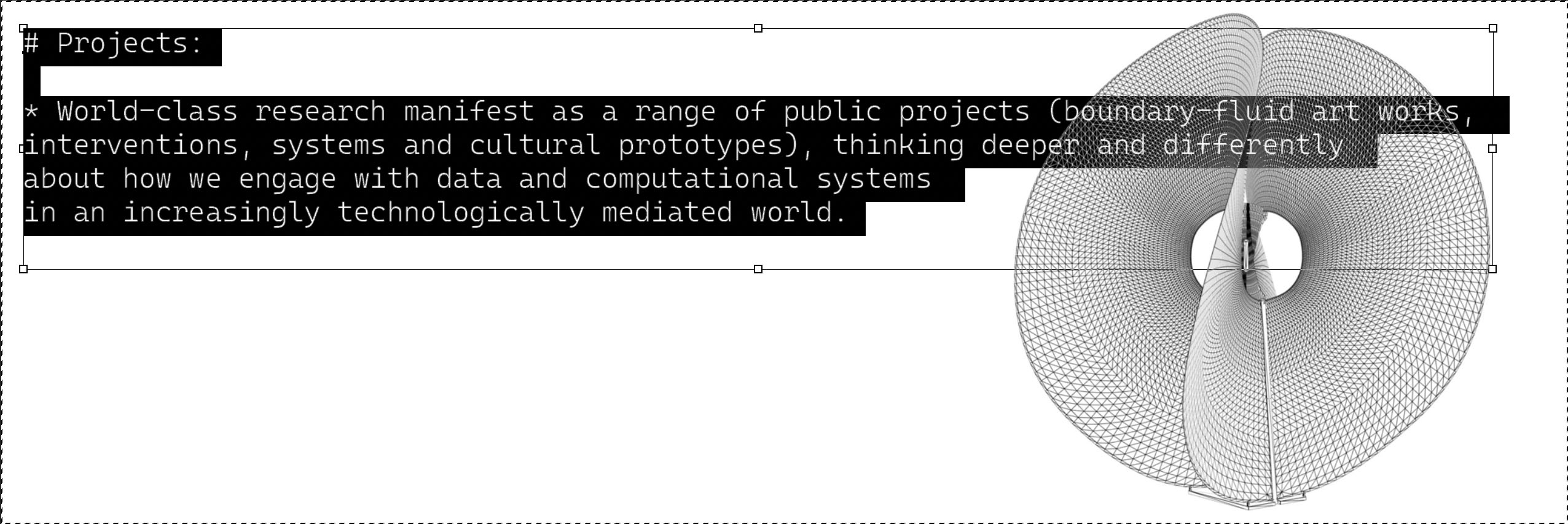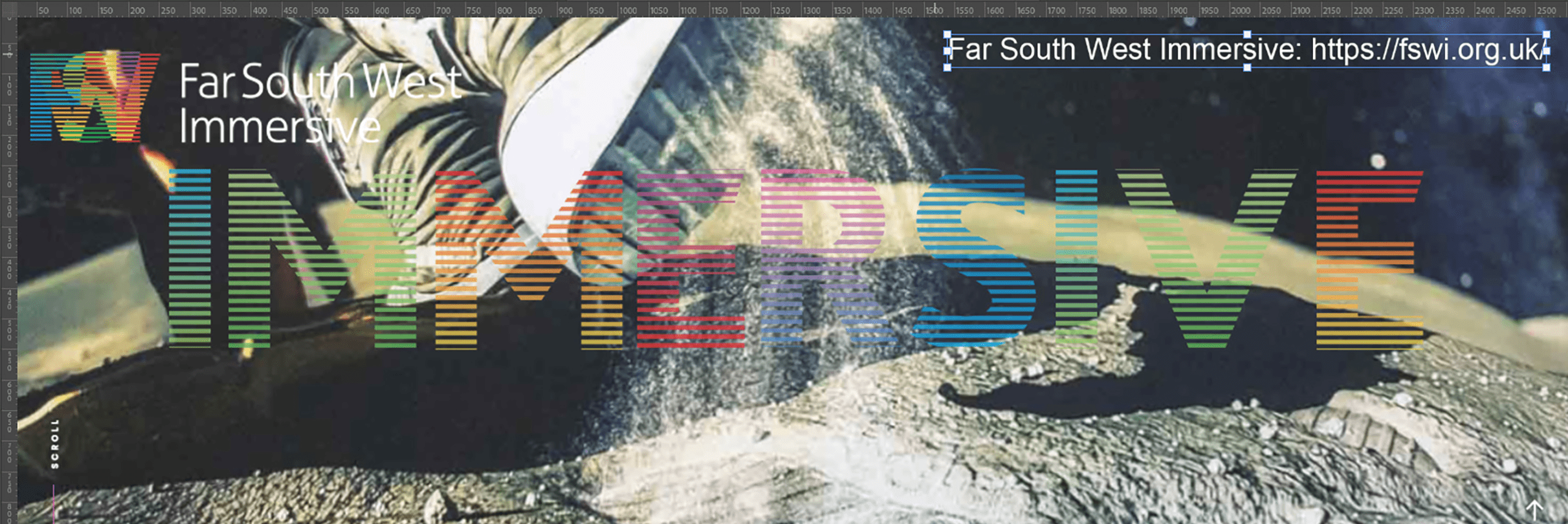
A series of satellite TV and Journal publications. A networked telematic comic.
MEDIASPACE:
The intent of ‘MEDIASPACE’, whether in its ‘dead’ paper-based form, or the ‘live’ digital forms of satellite and internet, is to explore the implications of new media forms and emergent fields of digital practice in art and design. ‘MEDIASPACEÍ is an experimental publishing project that explores the integration of print (‘MEDIASPACE’ is published as part of the CADE (Computers in Art and Design Education) journal Digital Creativity by SWETS & ZEITLINGER.), WWW and interactive satellite transmissions (‘MEDIASPACE’ interactive satellite transmissions were funded by the European Space Agency (ESA), the British National Space Centre (BNSC), and WIRE (Why ISDN Resources in Education) and use Olympus, EUTELSAT and INTELSAT satellites via a TDS-4b satellite uplink. (incorporating live studio broadcasts, ISDN based video conferencing, and asynchronous email/ISDN tutorials). The convergence of these technologies generates a distributed digital ‘space’ (satellite footprint, studio space, screen space, WWW space, location/reception space, and the printed page). There is also a novel and dynamic set of relationships established between the presenters (studio based), the participant/audience (located across Europe), and the reader. As an electronic publishing experiment in real time (‘live’ media) delivery, combined with a backbone of pre-packaged information (‘dead’ media content), the ‘MEDIASPACE’ transmissions provide a provocative model for the convergence of ‘publishing’, ‘networked’, and ‘broadcast’ forms and technologies.
Some text and images recovered from the WIRE transmissions:
EADTU WIRE TRANSMISSIONS
European Association of Distance Learning Universities (EADTU). https://eadtu.eu/
Information for Reception Sites.
 Test Transmission
Test Transmission
22.10.96 11.00 – 12.00 GMT
 Discovering Multimedia
Discovering Multimedia
05.11.96 12.00 – 13.00 GMT
 Managing the Multimedia Process
Managing the Multimedia Process
03.12.96 12.00 – 13.00 GMT
 Creating Multimedia
Creating Multimedia
07.01.96 12.00 – 13.00 GMT
 Virtual Environments
Virtual Environments
04.02.96 12.00 – 13.00 GMT
 Multimedia and the Internet
Multimedia and the Internet
04.03.96 12.00 – 13.00 GMT
(Rom Harré et al, 1985)
(Martin Heidegger, ‘Building Dwelling and Thinking’. 1954)
The network diagrams below try to illustrate the expected interactions and structures to be explored through out the transmissions. The physical structures have been broken down into the transient and the static.

Transient: Green disks represent the reception sites; Purple balls the ISDN asynchronous tutorials; Red disks the studio transmissions. Static: Blue disks the permanent sites of the World Wide Web site and the First Class server.
Of course, the reception sites and the studio are static, however for the purposes of the MEDIASPACE they only exist for the duration of the transmission.
(The Shape of Things to Come, H.G. Wells, 1933)
A train ticket represents a journey from A to B whilst at the same time representing a location (the train seat or carriage) for a duration (the time of the journey from beginning to end). In a similar way the MEDIASPACE transmissions are a broadcast from A to B, whilst at the same time evoking an extended location for the duration of each broadcast (stretching out, through networks, across the boundaries defining the space of each site), a new kind of space, hopefully a landscape of interactivity.
The Studio:
The Hoe T.V. Studio is located about a mile from the Satellite Uplink and is linked by a direct land line. The Satellite Uplink is based at the main University of Plymouth Campus. The studio has been producing educational and professional programmes for a number of years and is equipped with professional broadcasting and editing facilities.
 The MEDIASPACE Transmissions regularly use chromakey to provide back drops for the presenters.
The MEDIASPACE Transmissions regularly use chromakey to provide back drops for the presenters.
Video output is taken from the workstations on the studio floor and mixed with the camera feed. This allows the presenters to interact directly with the computer screen.
Each programme usually uses 3 cameras, one in a fixed position for the majority of the chromakey shots and the two others roaming around the studio.


Production team: Will Bakali / Kate Bryant Mic Cady / Geoff Cox / Culver Epps / Dave Flynn / Debbie Goacher / Dan Livingstone / Rob Morrison (SGI) / Jill Mortimer / Joe Nash / James Norwood / Mike Phillips / Chris Speed / Adrian Vranch Guests: Roy Ascott (CAiiA) / Brian Eno / Andy Finney / Tony Tucker (Macromedia) / Simon Turley /
EURONET Broadcasts (circa 1999).
“Wire – Mediaspace”: Converging technologies for distance learning in multimedia
A. Vranch, M. Phillips and R. Winders.
Computing Service, University of Plymouth, Seale-Hayne Campus, Newton Abbot, Devon, TQ12 6NQ, UK.
Paper prsented at the CAL 97 Conference “Superhighways, Super CAL, Super Learning?” University of Exeter 23rd – 26th March 1997
Keywords: Satellite, IT and learning, Multimedia, Rural, developing and remote areas, Video conferencing
Abstract
The University of Plymouth is developing an expertise and infrastructure for effective delivery of communications, information and learning at a distance. This strategy fits within a regional framework comprising seven main campuses, separated by some 200 km at the extremes, close links with local Partner Colleges and a lead role in RATIO, an initiative to set up a regional network of telematics centres for distance learning. “Wire” (Why ISDN Resources in Education?) is a three year European project offering five distance courses to ten Euro Study Centres. The University of Plymouth contribution to Wire is “Mediaspace”, a multimedia course comprising a series of live, interactive satellite TV transmissions, with supporting sessions, using ISDN video conferencing, remote control, file transfer, FirstClass electronic conferencing and WWW server access. This paper describes the development, delivery and evaluation of the Wire – Mediaspace course in terms of identifying combinations of converged technologies that provide effective distance learning. This project has implications in terms of technology transfer of experience and evaluation techniques to developments in regional and inter-regional distance learning courses. In a situation of rapid technological change the approach and outcomes of Wire – Mediaspace are expected to have an impact on delivery of effective distance learning for some time to come.
Introduction
The University of Plymouth and the South West region
The University of Plymouth is situated in the South West of England, distributed over seven main campuses in the counties of Devon, Cornwall and Somerset, separated by some 200 km at the extremes. In addition, the University has developed close links with local Partner Colleges of Further and Higher Education and is the lead partner in the RATIO (Rural Area Training and Information Opportunities) project, an initiative to set up a network telematics centres in the region for distance education and training. Within this regional framework the university is developing an expertise and infrastructure for effective delivery of communications, information and learning at a distance.
The “Wire – Mediaspace” course
“Wire” (Why ISDN Resources in Education?) is a European project to evaluate the effectiveness and costs of using ISDN for the delivery of distance learning courses. The project is funded and managed by the European Association of Distance Teaching Universities in Heerlen, The Netherlands as part of the European Open University Network. Partners from Finland, Belgium, UK, France and The Netherlands contribute to the project as course providers and course recipients through their Euro Study Centres, with support from telecommunications companies.
Wire is a three year project offering five distance courses to ten Euro Study Centres. The University of Plymouth contribution to Wire is “Mediaspace”, a series of live, interactive satellite TV transmissions, with supporting sessions, using ISDN video conferencing, remote control, file transfer, FirstClass electronic conferencing and WWW server access. The strategic importance of Wire – Mediaspace The current commitment for distance delivery of courses by the University is to over sixty telematics reception sites in the south west region, including campuses of the University, Partner Colleges and RATIO training centres. The Wire – Mediaspace project is a key contributor in identifying appropriate combinations of converged technologies that deliver effective, viable learning at a distance.
Development of techniques to integrate live satellite TV with other converging technologies for distance learning
Early live satellite TV transmissions with audio participation
The roots of the current Mediaspace series in the Wire project go back several years to the early trials at Plymouth that explored the potential for distance learning via live interactive TV broadcasts. In the early years of development the interaction with the viewers was achieved mainly using audio conferencing. In the early series of “StarNet” broadcasts the format of programmes was based on a professional presenter, with studio guests who were the business studies subject specialists. Interaction with viewers was by telephone and the presenters used standard handsets to talk to viewers, who dialled in via an audio bridge. The handsets in the studio were later replaced by studio microphones and speakers which made interaction with viewers appear more natural on screen, a key factor in enhancing viewer acceptance of the approach, identified via questionnaire responses.
Early experiences with audio conferencing in live transmissions identified technical problems, including a form of audio feedback called “howlround” and the general need for a specially trained operator to be available at the receive site. From this was developed the concept of the “facilitator”, a trained member of staff who was able to ensure that the satellite receiver was tuned in properly and who could oversee the use of audio conferencing equipment. This was important to provide an environment in which the viewer would feel relaxed and willing to participate, again a key factor in enhancing viewer acceptance.
Early integration of computers into live satellite TV transmissions
As the broadcasts in StarNet and other series progressed an interest developed in using computers to enhance the programmes. Graphics for presentation and electronic communication for interaction were identified as two key functions for the use of computers in this way. For example, a low-cost 286 PC computer was used for running an animation in a 1990 programme on computer viruses. In the “Solstice” series, interaction with electronic mail was explored using simple X25 communications into the studio and this helped to provide more feedback with viewers, although mail messages were not always delivered promptly. In the Solstice series librarians were trained at a distance in the use of computer-based library search techniques (Hughes, 1991).
Development of converged technologies for live satellite TV transmissions
Following these initial pilot broadcasts, techniques for using computers in live satellite programmes have been under constant review, in line with the appearance of new developments in the TV, computer and communications industries. Use of computers for presentations was developed further in the IT Training by Satellite series (Vranch, 1993) in which a Macintosh screen output was interfaced to the control room via a Mediator to provide quality computer images for broadcast in a combination of presentations of “bullet points” and animations and for live demonstration of specific software. A novel aspect of this approach was that for the first time it was the presenter who was in control of sophisticated computer-based presentation and graphics input to the broadcast, rather than the director in the control room. This innovation opened up the possibilities for a different, less formal approach to presenting live programmes that is now used in the Wire – Mediaspace series. It also demonstrated the analogy between using a computer to present a live TV programme and delivering a lecture in a modern auditorium. Early versions of Mediaspace were developed as single TV broadcasts using analogue video conferencing and X25 electronic mail on a much smaller scale than Wire – Mediaspace (Honeywill et al., 1995).
Wider availability of ISDN video conferencing has enhanced the potential for interaction with guest presenters and questions from viewers, both of which added much to the content and style of live transmissions. This development was also enabled the presenter in the studio to get visual feedback from the viewers at a distance, again improving interaction and making live TV presentations analogous to lecturing in a large, modern lecture theatre.
Course content, interaction and evaluation
Interactive TV transmissions
Details of topics covered in each transmission of this multimedia course are given in appendix 1. Technical details of transmissions are given in Appendix 2. Interaction is provided in the live TV sessions by ISDN video conferencing and FirstClass electronic conferencing, directly into the studio floor (figure 1). Additional input from viewers is made possible by telephone or facsimile to the control room and this input can be relayed immediately to the presenters. The FirstClass system provides a flexible means to obtain live feedback from viewers unobtrusively and enables efficient management of dial-in for ISDN video conferences. Video conferences are used to bring guests “into the studio” at a distance and to interact with viewers for comments and questions. In addition, the FirstClass electronic conferencing system enables an interactive dialogue between all participants before, during and after the transmissions.
The presenters control the delivery of the programme content from the studio floor as computer presentations and this output is integrated in the control room mixer with video conference PC output, CRO “back projection” technology, audio and camera video outputs, to provide the transmitted signal. The studio director is in voice contact with the presenters and studio staff at all times.
Interactive support sessions
Interaction in support sessions is provided in both synchronous and asynchronous form. Interactive ISDN video conference sessions, with associated remote control via Timbuktu and ISDN file transfers enable student peer to peer and student/tutor interaction in learning and facilitate distance collaboration in multimedia projects. Asynchronous interaction is on-going via the FirstClass conferences, following up ideas generated in previous TV transmissions, adding content during the programmes and providing topics for interaction in the next TV programme or in the next ISDN video conference session. The FirstClass conferences provide an on-going record of the progress of the support sessions in an interactive dialogue and a forum for sharing files as attachments. A WWW server adds a further dimension to this sharing process.
This record is an important resource which can be revisited and built on as the course progresses and can be used later in conjunction with video tapes of the live programme by new groups of students.
Evaluation
Evaluation of Mediaspace is on two levels. First, the course is evaluated in the context of the Wire project in terms of the effectiveness of the combination of technologies used with ISDN compared with other approaches. Second, there is an evaluation of the approach adopted to identify its success in delivering effective distance learning specifically for multimedia as a course topic.
In both cases evaluation is made from a combination of questionnaires and analysis of interaction from video tapes of live programmes, logs of video conference sessions and from analysis of the FirstClass conferences throughout the course. Specific software has been developed to extract key information from the FirstClass conference log files, in addition to manual analysis of the content of conference threads and the comments within.
Implications for future distance learning developments
The Wire – Mediaspace project gives rise to specific outcomes which have implications for future distance learning work, including:
- further consolidation of experience and expertise in identifying the balance needed in technologies for effective distance learning;
- development of methods for evaluation of distance learning, based on the use of converged technologies;
- the technology transfer of this research-based approach towards application within mainstream activity, for example the University of Plymouth Institute of Health Studies learning programme, RATIO courses and other regional or inter-regional activities.
In addition, as technologies available for delivery of distance learning materials develop, so the present approach of evaluating solutions for effective convergence of technologies becomes more relevant. For example, development of high bandwidth regional, metropolitan or international networks can offer an alternative to satellite for delivery of broadcast quality video, although there may be limitations for mass, simultaneous broadcast over a large area using these terrestrial networks. Nevertheless, principles and evaluation procedures developed in Wire – Mediaspace will still be applicable to these developments.
The use of the satellite data carrier signal, for data broadcast at 100 Kbps at the same time as TV and video, offers new opportunities for mass, simultaneous distribution of learning materials. Furthermore, moves to transmit live TV programmes using MPEG2 digital compression are now taking place from the University of Plymouth uplink, with the cost advantage of reduced satellite rental charges, since only one-eighth (Glover, 1996) of the satellite transponder is required.
Even in a situation of rapid technological change the outcomes of Wire – Mediaspace are expected to have an impact on delivery of effective distance learning for some time to come.
References
Glover, P. (1996) Interactive Digital Television by Satellite, Proceedings of On-line Educa, Berlin, 13 – 15 November
Honeywill, P, Phillips, M and Vranch, A. (1995) Converging New Technologies for Art and Design Education. Proceedings of Digital Creativity, the First Conference on Computers in Art and Design Education (CADE ’95), Brighton, UK, April.
Hughes, A (1991) Project SOLSTICE. ASLIB Information, 19, 11 & 12.
Vranch, A. T. (1993) Staff Development and Training by Satellite in the University of Plymouth, Proceedings of Olympus Utilisation Conference, Sevilla, Spain, 20 to 22, ESA WPP-60, 247 to 252.
Acknowledgements This work was funded by the European Association of Distance Teaching Universities, with matched funding from the University of Plymouth. This funding support is gratefully acknowledged.
This document was added to the Education-line database 15 October 1998
















You must be logged in to post a comment.